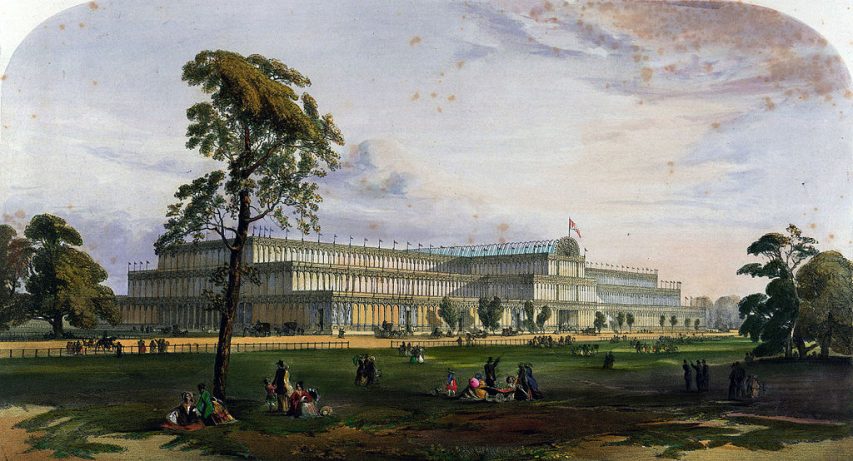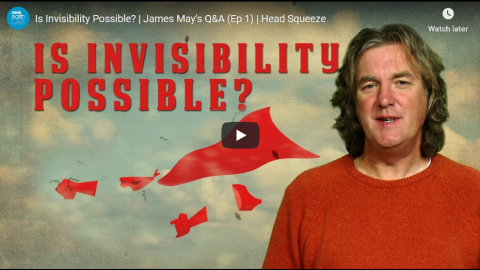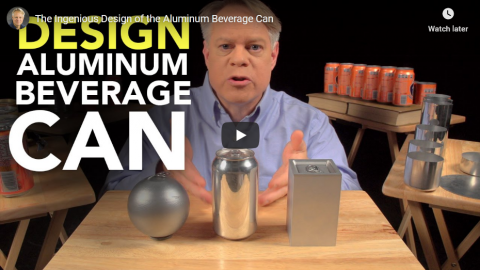Germany’s love for the automobile began with a road trip from nearby Mannheim to the town of Pforzheim, less than 30 miles from Stuttgart. In 1885, Karl Benz had invented his first Motorwagen, a three-wheeled vehicle with a gas-powered engine of his own design. One of the first times he managed to get it started, he drove it straight into his laboratory wall.
By 1888, he had a working prototype, which had successfully driven down a road. The now-patented Motorwagen had no gears and could not go up hills, but it worked. One morning, Benz’s wife Bertha decided to take the car on its first extended road trip. With her two sons, she pushed the car out of the garage, until it was far enough from the house that they could get it started without waking her husband.
Bertha Benz had a destination in mind — her parents’ house in Pforzheim, about 65 miles from her home. Following roads meant for wagons, she and her sons started the drive — the first recorded road trip in a car.
There were challenges. A pipe clogged; Benz cleaned it with her hat pin. A wire shorted; she insulated it with her garter. They needed more fuel; she convinced a pharmacist to sell her an unusually large amount of the gas the car used. When the brakes started wearing out, she had them shod with leather at a cobbler. When she reached a hill, she had the boys push (along with local help).
By the end of the day, the Benzes had reached Pforzheim, where Bertha telegraphed her husband that they were safe. After a few days’ visit, they drove back home to Mannheim.
Ten years ago, Germany created an official Bertha Benz Memorial Route, marking her historic road trip. Part of Bertha Benz’s motivation was to sell potential customers on the advantage of automobiles; although it took another decade or so, people eventually bought into this transportation revolution.
Sarah Laskow, “An 1888 Road Trip Sparked Germany’s Romance With Cars”, Atlas Obscura, 2018-02-28.
June 15, 2020
QotD: The very first “road trip”
June 13, 2020
Is Invisibility Possible? | James May’s Q&A (Ep 1) | Head Squeeze
BBC Earth Lab
Published 10 Jan 2013James May answers the question as to whether or not invisibility is possible. James draws upon quite a few interesting theories during this discussion.
Outtakes from this video: https://www.youtube.com/watch?v=6Fy1Xkx5VFc
James May’s Q&A:
With his own unique spin, James May asks and answers the oddball questions that we’ve all wondered about from ‘What exactly is one second?’ to ‘Is invisibility possible?’
May 27, 2020
The Battle to Crack Enigma – The real story of ‘The Imitation Game’ – WW2 Special
World War Two
Published 26 May 2020For the British, breaking the Germans’ seemingly unbreakable codes is one of the most vital battles of the war. If they fail, there is litte to stop the German U-Boats hunting down Allied shipping in the Atlantic.
Join us on Patreon: https://www.patreon.com/TimeGhostHistory
Or join The TimeGhost Army directly at: https://timeghost.tvFollow WW2 day by day on Instagram @World_war_two_realtime https://www.instagram.com/world_war_t…
Between 2 Wars: https://www.youtube.com/playlist?list…
Source list: http://bit.ly/WW2sourcesHosted by: Indy Neidell
Written by: Francis van Berkel
Director: Astrid Deinhard
Producers: Astrid Deinhard and Spartacus Olsson
Executive Producers: Astrid Deinhard, Indy Neidell, Spartacus Olsson, Bodo Rittenauer
Creative Producer: Joram Appel
Post-Production Director: Wieke Kapteijns
Research by: Francis van Berkel
Edited by: Mikołaj Cackowski
Sound design: Marek Kamiński
Map animations: Eastory (https://www.youtube.com/c/eastory)Colorizations by:
Jaris Almazani (Artistic Man), https://instagram.com/artistic.man?ig…
Norman Stewart, https://oldtimesincolor.blogspot.com/
Carlos Ortega Pereira, BlauColorizations, https://www.instagram.com/blaucoloriz…Sources:
Bundesarchiv
Narodowe Archiwum Cyfrowe
IWM D 23310, A 13709, A 23513
Picture of Enigma G model, courtesy Austin Mills https://flic.kr/p/2bQ9Q
reconstructed bombe machine at Bletchley Park, courtesy Gerald Massey
Picture of Enigma M4 model displayed at Bletchley Park, courtesy Magnus Manske
Picture of John Herivel, courtesy GCHQ
From the Noun Project: Letter by Mochammad Kafi, Desk by monkik, Phone by libertetstudio, person by Adrien Coquet, Letter by Bonegolem, Table by Creative Stall, documents by Johannes Hirsekorn, sitting at desk by IYIKON, Paper by James KopinaSoundtracks from the Epidemic Sound:
Reynard Seidel – “Deflection”
Johannes Bornlof – “The Inspector 4”
Phoenix Tail – “At the Front”
Johannes Bornlof – “Deviation In Time”
Gunnar Johnsen – “Not Safe Yet”
Hakan Eriksson – “Epic Adventure Theme 3”
Howard Harper-Barnes – “London”Archive by Screenocean/Reuters https://www.screenocean.com.
A TimeGhost chronological documentary produced by OnLion Entertainment GmbH.
From the comments:
World War Two
4 hours ago (edited)
Hopefully you’re all staying safe in these difficult times. We’re still marching on so that we can keep all of you entertained when you’re stuck at home. But we can only continue doing so thanks to your ongoing support. Ad revenue has dropped significantly because of COVID, and we rely on your support now more than ever. If you can, please support us on www.patreon.com/timeghosthistory or https://timeghost.tv.Please let us know what other specials you’d like to see. And if you would like to know something about a smaller topic, make sure to submit that as a question for our Q&A series, Out of the Foxholes. You can do that right here: https://community.timeghost.tv/c/Out-of-the-Foxholes-Qs.
Cheers,
Francis
May 25, 2020
The Ingenious Design of the Aluminum Beverage Can
engineerguy
Published 14 Apr 2015Bill details the engineering choices underlying the design of a beverage can He explains why it is cylindrical, outlines the manufacturing steps needed to created the can, notes why the can narrows near it lid, show close ups of the double-seam that hold the lid on, and details the complex operation of the tab that opens the can.
May 23, 2020
QotD: Computer trade show tchotchkes
[Computer] convention attendees have no […] problem being showered with promotional gifts from all sides as they totter up and down the rows of booths.
You can see them staggering back to their hotel rooms, arms full of corporate-branded freebies, where they have prepared an empty suitcase specifically for shipping it all back to their BOFH Central at the end of the show.
Sure, it’s all crap. It’s usually the likes of childish desk toys, cable tidies that will snap within the week, pencils and logo-shaped erasers (as if you use such items all the time, right?), and Swiss army knives that will be routinely confiscated as you pass through airport security for the trip home. No matter, just turn up to the expo and companies will toss gifts at you like you were the GitHub messiah taking a seaside donkey ride into sysadmin Jerusalem.
Well, nobody tosses any in my direction. No blotchy ballpoint pens for me. No evil-smelling pads of sticky-notes that don’t stick to anything. No spongey stress balls. No smartphone stands. No sharply angular keyfobs that stab into my bollocks when I sit down.
Me, when I visit an IT exhibition stand on the cadge, I have to provide evidence of my media accreditation, two forms of photo ID, an electricity bill, birth certificates of my family going back four generations (originals only, please) and a DNA swab before I qualify to receive a boiled sweet.
Alistair Dabbs, “‘Don’t tell anyone but I have a secret.’ There, that’s my security sorted”, The Register, 2020-02-21.
May 16, 2020
How It’s Made – Utility Poles
QotD: Division of labour in the modern world
… digital devices slow us down in subtler ways, too. Microsoft Office may be as much a drag on productivity as Candy Crush Saga. To see why, consider Adam Smith’s argument that economic progress was built on a foundation of the division of labour. His most celebrated example was a simple pin factory: “One man draws out the wire, another straights it, a third cuts it, a fourth points” and 10 men together made nearly 50,000 pins a day.
In another example — the making of a woollen coat — Smith emphasises that the division of labour allows us to use machines, even “that very simple machine, the shears with which the shepherd clips the wool”.
The shepherd has the perfect tool for a focused task. That tool needs countless other focused specialists: the bricklayer who built the foundry; the collier who mined fuel; the smith who forged the blades. It is a reinforcing spiral: the division of labour lets us build new machines, while machines work best when jobs have been divided into one small task after another.
The rise of the computer complicates this story. Computers can certainly continue the process of specialisation, parcelling out jobs into repetitive chunks, but fundamentally they are general purpose devices, and by running software such as Microsoft Office they are turning many of us into generalists.
In a modern office there are no specialist typists; we all need to be able to pick our way around a keyboard. PowerPoint has made amateur slide designers of everyone. Once a slide would be produced by a professional, because no one else had the necessary equipment or training. Now anyone can have a go — and they do.
Well-paid middle managers with no design skills take far too long to produce ugly slides that nobody wants to look at. They also file their own expenses, book their own travel and, for that matter, do their own shopping in the supermarket. On a bill-by-the-minute basis none of this makes sense.
Why do we behave like this? It is partly a matter of pride: since everyone has the tools to build a website or lay out a book, it feels a little feeble to hand the job over to a professional. And it is partly bad organisational design: sacking the administrative assistants and telling senior staff to do their own expenses can look, superficially, like a cost saving.
Tim Harford, “Why Microsoft Office is a bigger productivity drain than Candy Crush Saga”, The Undercover Economist, 2018-02-02.
May 15, 2020
The Largest Aircraft Ever Built By Britain: The Bristol Brabazon
Mustard
Published 23 Jun 2018With a wingspan greater than a Boeing 747, the Bristol Brabazon was the largest aircraft ever built by Britain. More a flying oceanliner than plane, it featured sleeping cabins, a dining room, a cocktail bar and lounge, and even a 23-seat movie theater.
The Brabazon was also fitted with cutting edge innovations. A fully pressurized, air conditioned cabin. Electric engine controls, and high-pressure hydraulics to operate its massive control surfaces. Its enormous wing housed more than 16 thousand gallons of fuel, and eight of the most powerful piston engines available. While the first Brabazon used piston engines, later Brabazons were to use turboprop engines that were being developed by Bristol.
The Bristol Brabazon would have true transatlantic capability. Able to fly non-stop from London to New York against prevailing eastern winds. In the 1940s, this would have been quite the feat. Transatlantic flights were almost always done in stages to allow for refueling.
Despite introducing new innovations, many of which influenced the future of aviation, the Brabazon’s driving philosophy was outdated. The Brabazon’s mission was to compete with ocean liners for ultra-wealthy passengers. But this lumbering, super-sized airliner would have been introduced with airlines for 1950s, right when the first jet airliners, like the De Havilland Comet, were taking to the skies. Aircraft like the Dash 80, which would become the 707, were also just around the corner, and would bring a transatlantic crossing down to as little as 7 hours.
After a massive design and development effort, Britain found itself stuck with a plane nobody actually wanted, designed for an era that no longer existed.The program was cancelled and the Brabazon, and its half finished turboprop successor were sold for their weight in scrap.
#BristolBrabazon #BritishAviation #WhiteElephant #Airplanes
For an authoritative resource on the Bristol Brabazon visit:
http://www.historynet.com/bristol-bra…Special thanks to niltondc for helping to model the Bristol Brabazon:
https://www.youtube.com/user/niltondcLike the the aviation industry posters found in this video? Visit The Aviation Ancestry Database, containing over 80,000 high-quality examples: http://www.aviationancestry.co.uk/
Special thanks to Nick Arehart for helping clean up our audio:
https://twitter.com/airhrt_Special thanks to: Coby Tang, Christian Altenhofen and Razvan Caliman for supporting us on Patreon and helping Mustard grow: https://www.patreon.com/MustardChannel
Music (reproduced under license):
Intro & Extro: “Wells Street” – https://www.pond5.com/stock-music/730…
Main Song #1: “Worrying Clock Cycle” – https://www.pond5.com/stock-music/767…
Main Song #2: “The Funk Kit” – https://audiojungle.net/item/the-funk…
May 13, 2020
Okay, I’ll be careful not to call this “deceptive advertising” in future
At View from the Porch, Tam explains why digital camera terminology sometimes seems to be deliberately deceptive:
The disconnect comes when you run into the “luxury” or “enthusiast” end of the compact camera market, where the physical size of the 1″ sensor in cameras like Sony’s RX100 line or the Canon PowerShot G7/G9 is touted as a selling point.
Because the sensor itself is not physically an inch in any dimension. For that matter, a tiny 1/2.5″ sensor isn’t two fifths of an inch in any dimension either.
Small CCD/CMOS video sensors are labeled based on the size of video tube they replace. These tubes had a rectilinear imaging surface inside the cylindrical glass vacuum tube. Inside a 1″ tube would be an imaging surface measuring 16mm diagonally, or a little less. When solid state sensors started replacing tubes forty years ago, they were labeled according to the tube they’d replace.
So to this day, a sensor 16mm (or a bit less) diagonally is still called a 1″ sensor.
For that matter, “35mm” film is only 35mm if you measure from edge-to-edge, sprocket holes and all. “Full Frame/35mm” sensors are only about 29mm diagonally; there aren’t any digital sprocket holes.
Just like we still “dial” and “hang up” our cell phones, even though phones with dials and handsets that you hang on the wall are a vanishing memory, digital imaging technology is still named after the analog technologies it supplanted.
May 9, 2020
Sidewalk Labs pulls out of their Panopticon-on-the-harbour project in Toronto
Chris Selley clearly hoped the Google-affiliated Sidewalk Labs would turn out to be a benign addition to the Waterfront:

Sidewalk Labs Toronto demo, 17 April 2019.
Photo by Raysonho @ Open Grid Scheduler / Scalable Grid Engine via Wikimedia Commons.
It would be a mixed-income and family-friendly community: 20 per cent low-income and 20 per cent middle-income, with 40 per cent of units two-bedrooms or larger. It would be fantastically energy-efficient. It would discourage waste production using “pay-as-you-throw chutes” leading to pneumatic tubes that would rocket your trash, recycling and organic waste to the proper facilities.
Some of the details seemed a bit far-fetched, and some of the ideas came to naught at the design stage. But the Google family of companies is not known for wretched failure. To many Torontonians, it was a compelling vision.
Unfortunately, a lot of the very people it was designed to impress hated the hell out of it.
[…]
So there is blame to go around — and to be clear, no one is officially blaming the city bureaucracy or the project’s opponents for scuppering the deal. But the fact is, Sidewalk simply wandered into the wrong saloon. Toronto is an intensely conservative city in the strictest sense of the word. Its establishment doesn’t even believe things that work in other cities would work here. It’s why we pilot-project food carts to death, instead of just allowing food carts. It’s why we’re closing parks and crowding people on sidewalks during the pandemic, instead of following other the lead of other cities and dedicating roads to safely spaced pedestrians and cyclists. When Ontario loosened alcohol regulations, many Torontonians predicted tailgate parties and picnics-with-wine would lead to mayhem — and they really, really meant it.
Sidewalk wanted to do something no other city had ever done. You can imagine the terror and confusion it sowed. And that was over 12 acres — six football fields. Toronto has a great many things going for it. I have argued in the past that its conservatism, broadly speaking, has served it very well. But Sidewalk reminded us what we trade for that. If we can’t take a bit of a chance on 12 acres, it doesn’t bode at all well for the many hundreds of other acres in this city that have been begging for redevelopment my entire lifetime — not if we want them to be at all innovative or memorable, anyway.
QotD: Networks don’t work that way with humans
When I came here [to Silicon Valley] I encountered tremendous arrogance. A kind of “resistance is futile” mentality that of course our apps will take over the world, and when they do, when everybody is connected, that’ll be awesome! There will be one global community and everything will be great. And my response to that was: That’s insane. That’s historically completely implausible. We’ve run experiments with really large-scale social networks before. We didn’t have the Internet, but that didn’t matter. You could do it with a printing press. You could even do it just with the written word. And the result is never to produce a single homogenous cluster of happy-clappy individuals in a global community. That never happens.
Niall Ferguson, quoted by @bigthinkagain, 2018-02-17.
May 3, 2020
The Great Exhibition of 1851
In the latest Age of Invention newsletter, Anton Howes looks at one of the biggest popular events of Queen Victoria’s reign, the Great Exhibition:

The Crystal Palace from the northeast during the Great Exhibition of 1851, image from the 1852 book Dickinsons’ comprehensive pictures of the Great Exhibition of 1851
Wikimedia Commons.
On this day, in 1851, Londoners were finally allowed to enter one of the most spectacular edifices to grace their city. Over the previous months they had watched it spring up in Hyde Park — the largest enclosed structure that had ever been built, and made with three hundred thousand of the largest panes of glass ever produced. Set against the blackened, soot-stained buildings of London, the massive glass edifice gleamed. It soon became known as the Crystal Palace.
Although it no longer exists — it was rebuilt in Sydenham, but the new version burnt down in the 1930s — the fame of the Crystal Palace endures. The same goes for the event that it was originally built for, the Great Exhibition of 1851. But, despite that name-recognition, I’ve found that most people don’t really know what the Great Exhibition was for. Yes, it attracted six million visitors in the space of just a few months — an estimated two million people, almost a tenth of the entire population of Great Britain, most of them returning again and again. But why? I must admit, despite having mentioned the event before in some of my work, I’d never really considered it properly before I started researching the history of the Society of Arts.
The idea of such an exhibition in Britain originated with the Society’s secretary in the 1840s, the civil engineer Francis Whishaw. He had seen the use of industrial exhibitions in France, as a means of catching up with Britain in terms of technology. Every few years since 1798, the French government had held an exhibition of its national industries in Paris. The state paid for everything — a grand temporary building, as well as the expenses of the exhibitors — and the head of state himself awarded medals and cash prizes for the bet works on display. Some of the very best exhibitors were even admitted to the Légion d’honneur, France’s highest order of merit. The benefits to exhibitors were so high that essentially every manufacturer wished to take part. In the days before GDP statistics, the exhibitions were thus an effective means of getting a detailed snapshot of the nation’s manufacturing capabilities. An exhibition served as the nation’s industrial audit.
[…]
Although there had been a few local exhibitions of industry in Britain in the late 1830s and early 1840s, there had been nothing on a national scale to rival the French ones. So Francis Whishaw began the work of getting the Society to organise such an event — a national exhibition of industry for Britain. His initial plan came to nothing, partly as he left the Society to take another job, but in the late 1840s the project was resurrected by a new member of the Society, a civil servant named Henry Cole. In fact, Cole almost entirely took over the Society in the late 1840s, turning it into an exhibition-holding organisation. It held exhibitions devoted to particular living artists, on ancient and medieval art, on inventions, and especially on industrial design — what Cole liked to call “art-manufactures”. And, at the 1849 national exhibition in Paris, he adopted an idea that had already been floated for some years by French officials: an international exhibition, to show the industry of all nations.
This was the crucial step. The idea of an international exhibition of industry appealed to the free trade movement in Britain, which had achieved success in the 1840s with the abolition of the Corn Laws. By displaying the products of other nations, the argument went, British consumers would demand that they be able to buy them more cheaply. And free trade would hopefully bring an end to war, too. Free trade campaigners argued that the productive classes of rival nations competed peacefully, simply by trying to outdo one another in the quality and quantity of what they produced. It was the landed aristocracy, they argued, who let the competition become violent, feeding their pride by causing destruction. Thus, a grand exhibition of the products of all nations — the Great Exhibition — would be a physical manifestation of free trade and international harmony: a “competition of arts, and not of arms”.
The Great Exhibition thus had many roles. It was partly born of national paranoia, about French industrial catch-up, as well as about Britain being the first to hold such an event. It was also about exciting competitive emulation between manufacturers, showing consumers what they did not know they wanted, and achieving world peace and free trade. It certainly spurred on dozens of examples of international cooperation. In fact, just the other day I discovered that the first international chess tournament was held in London to coincide with the exhibition. And it served as an audit of the world’s industries, allowing people to judge who was ahead and who was behind. It thereby gave domestic reformers the ammunition to push for changes in areas where Britain seemed to be falling behind, in areas like education, intellectual property, and design. But more on those another time.
April 29, 2020
“The war on ultraviolet radiation because it might help Trump is an educational moment”
Arthur Chrenkoff on the sudden decision that the World Health Organization is the ultimate arbiter of what we’re allowed to say on social media platforms like Twitter and YouTube:
There is of course no evidence that the video represents any disinformation. It relates to legitimate scientific research by a medical company conducted in association with a respected hospital to develop a novel treatment of possibly crucial importance in the current conditions and into the future. The only problem with the video is that is indirectly supports Trump’s flight of fancy speculation about using light and chemicals to “disinfect” the body. Ergo, according to a NYT journalist it represents a problem and YouTube agrees. YouTube now has a standing policy of removing COVID information that goes against the World Health Organisation’s guidelines. Putting aside the question of the WHO’s credibility in the wake of the pandemic, we are not talking here about some guy in a tinfoil hat talking about 5G towers spreading the virus; this is a video relating to ongoing, respectable scientific research. Will it work? Probably not. But perhaps neither will any of the 150 or so COVID-19 vaccines being currently developed around the world. We won’t know until we know. But in the meantime, scientific news should not be censored, period.
[…]
Goldsmith and Woods are correct in pointing out not only the greater role that governments have been playing in regulating speech but more importantly how much of that effort has been embraced and driven by the big tech — and by the private individuals enabled and encouraged by the big tech — what I have previously called the “democratised censorship”. The difference is that people like Goldsmith and Woods think that’s a good thing.
The dirty little secret is that a great number of leftists, progressives and even centrist technocrats and activists look at China, with its authoritarian government, social credit score system, ubiquitous surveillance, and the ability to “get things done” and done quickly and supposedly efficiently (in China, bullet trains run on time, I hear), and pine for such a system to be applied in their own countries — as long as, of course, they are the ones in power and decide what is right, important and valuable. The left’s objections are rarely against authoritarianism and its means and methods per se, just with the possibility that someone else — like Trump — is the one behind the wheel, implementing their, not the left’s, agenda.
The war on ultraviolet radiation because it might help Trump is an educational moment. One could say, first they came for crazy conspiracy theorists and I said nothing because I’m not an anti-vaxxer or anti-5G activist — and so on. The problem with censorship is that it keeps creeping up on everyone else. And those who do the censoring — who decide what the ignorant masses should and shouldn’t be allowed to read — are not some detached and impartial spiritual beings but people with political agendas. People who think that ideas and beliefs of one half of the society are harmful and offensive. People who will censor news that doesn’t fit the agenda and support the narrative.
And then they came for ultraviolet radiation… You have been warned.
April 28, 2020
ESR on “Lassie errors” in software
I’d never heard this term before, but it’s an excellent description of the problem:
Lassie was a fictional dog. In all her literary, film, and TV adaptations the most recurring plot device was some character getting in trouble (in the print original, two brothers lost in a snowstorm; in popular memory “Little Timmy fell in a well”, though this never actually happened in the movies or TV series) and Lassie running home to bark at other humans to get them to follow her to the rescue.
In software, “Lassie error” is a diagnostic message that barks “error” while being comprehensively unhelpful about what is actually going on. The term seems to have first surfaced on Twitter in early 2020; there is evidence in the thread of at least two independent inventions, and I would be unsurprised to learn of others.
In the Unix world, a particularly notorious Lassie error is what the ancient line-oriented Unix editor “ed” does on a command error. It says “?” and waits for another command – which is especially confusing since ed doesn’t have a command prompt. Ken Thompson had an almost unique excuse for extreme terseness, as ed was written in 1973 to run on a computer orders of magnitude less capable than the embedded processor in your keyboard.
Herewith the burden of my rant: You are not Ken Thompson, 1973 is a long time gone, and all the cost gradients around error reporting have changed. If you ever hear this term used about one of your error messages, you have screwed up. You should immediately apologize to the person who used it and correct your mistake.
Part of your responsibility as a software engineer, if you take your craft seriously, is to minimize the costs that your own mistakes or failures to anticipate exceptional conditions inflict on others. Users have enough friction costs when software works perfectly; when it fails, you are piling insult on that injury if your Lassie error leaves them without a clue about how to recover.
April 27, 2020
The NFL may have a problem … everyone seems to have liked the virtual draft better than the “real” thing
It is usually difficult to muster much sympathy for the National Football League, but the record-setting popularity of the 2020 draft is a huge surprise:
The unique presentation of the 2020 NFL Draft established new all-time highs for media consumption in every category. With over 600 camera feeds from homes across the United States, all telecasts of the 2020 NFL Draft reached more than 55 million total viewers across Nielsen-measured channels over the three-day event, up +16% vs. 2019. An average audience of over 8.4 million viewers watched all three days of the 2020 NFL Draft across ABC, ESPN, NFL Network, ESPN Deportes, and digital channels easily breaking the previous high of 6.2 million viewers in 2019 (+35%).
Each day of the 2020 NFL Draft established new highs as an average audience of over 15.6 million viewers watched Round 1 on Thursday (+37% vs. 2019), over 8.2 million viewers watched Rounds 2 & 3 on Friday (+40% vs. 2019), and over 4.2 million viewers watched Rounds 4-7 on Saturday (+32% vs. 2019).
All seven rounds of the 2020 NFL Draft were presented across ABC, ESPN, and NFL Network – the second straight year that The Walt Disney Company partnered with the National Football League to offer a multi-network presentation of the entire Draft.
“I couldn’t be more proud of the efforts and collaboration of our clubs, league personnel, and our partners to conduct an efficient Draft and share an unforgettable experience with millions of fans during these uncertain times,” said NFL Commissioner Roger Goodell. “This Draft is the latest chapter in the NFL’s storied history of lifting the spirit of America and unifying people. In addition to celebrating the accomplishments of so many talented young men, we were pleased that this unique Draft helped shine a light on today’s true heroes – the healthcare workers, first responders, and countless others on the front lines in the battle against COVID-19. We are also grateful to all those who contributed to the NFL family’s fundraising efforts.”
“This year’s NFL Draft clearly took on a much greater meaning and it’s especially gratifying for ESPN to have played a role in presenting this unique event to a record number of NFL fans while supporting the league’s efforts to give back,” said ESPN President Jimmy Pitaro. “The success of this year’s Draft is a testament to the unprecedented collaboration across the NFL, ESPN, and The Walt Disney Co. in the midst of such a challenging time.”
The unique situation of having the vast majority of televised sports activities suspended clearly made a big difference — when you’re the only game in town, you can expect a wider audience — but the online draft seems to have been popular even among people who normally would have tuned in for the event anyway.












